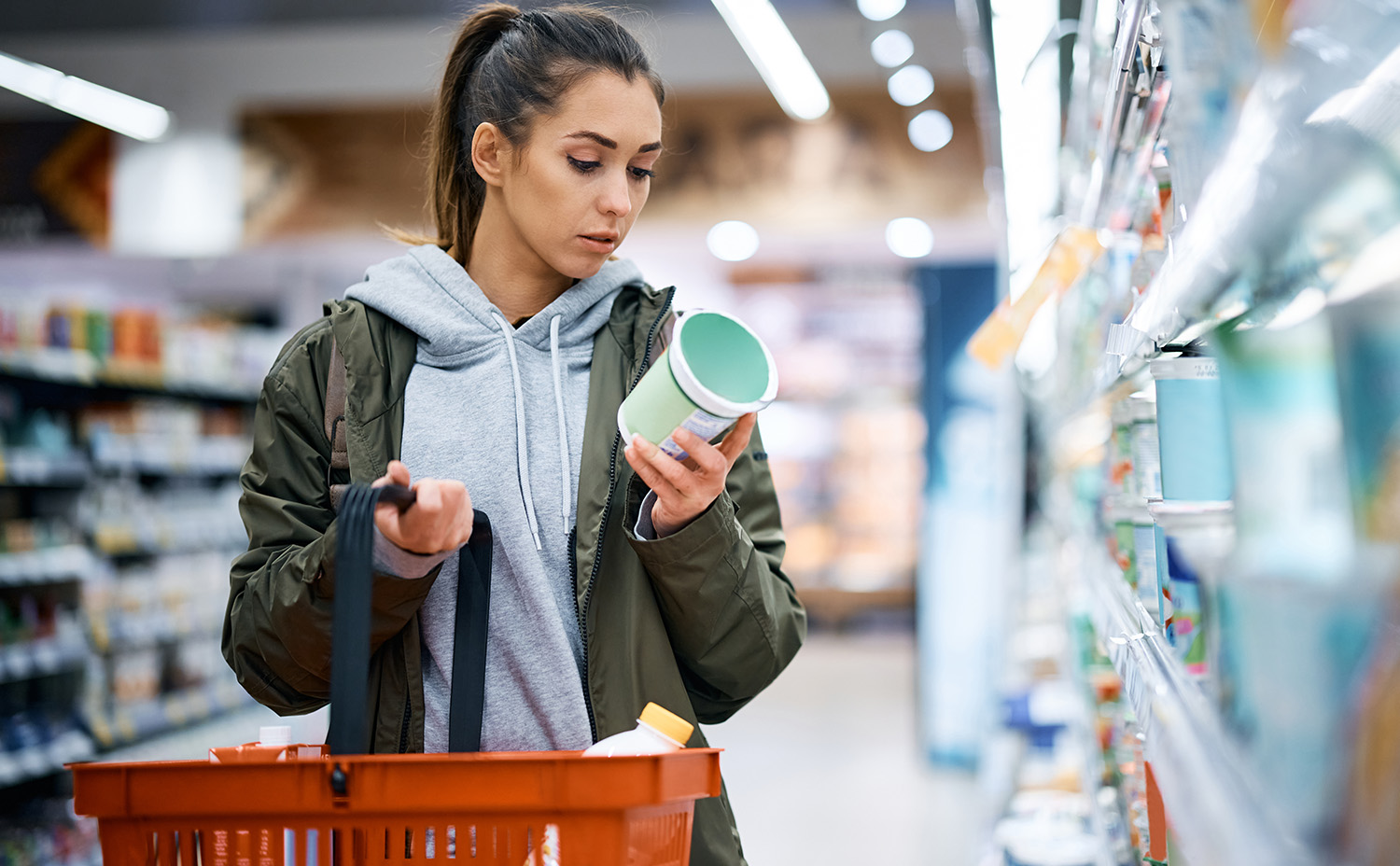Medically reviewed by Dr. Jordan Pinsker, Vice President & Medical Director, Tandem Diabetes Care.
Finding the right diet is a very important part of diabetes management. For people living with type 1 or type 2 diabetes, the foods they choose can greatly influence their day-to-day lives.
Because food has a direct impact on glucose, also called blood sugars, it can be helpful to identify foods that can increase insulin resistance.
An insulin resistant diet is designed to help keep blood glucose levels within an acceptable target range, while also minimizing the number of spikes or dips in blood sugar.
Learn more about time in range and what it means for diabetes management.
To understand what that means for someone living with diabetes, it’s important to first understand how glucose impacts people living with type 1 or type 2 diabetes.
Glucose is a type of sugar/carbohydrate that is either stored away in the liver until it’s needed, or it is entering cells and providing energy.
Learn more about understanding glucose and how to monitor it.
Healthcare professionals recommend that people living with type 1 or type 2 diabetes avoid highly processed foods, such as white bread, pasta, rice, and sugary soda. These foods digest quickly and can cause spikes in blood glucose levels. Instead, it’s advisable to opt for whole foods that are rich in fiber, lean proteins, and healthy fats.
“Rather than view food as ‘good’ or ‘bad,’ it may be more helpful to understand which foods can help regulate blood sugar levels in the body and which are more likely to cause a spike,” said Dr. Jordan Pinsker, Vice President and Medical Director for Tandem Diabetes Care.

What is Insulin Resistance?
Insulin resistance occurs when the cells in the body do not respond well to insulin, which impairs their ability to use the glucose in the bloodstream to create energy. This leaves more glucose in the blood, resulting in high blood sugar levels.
In the early stages of insulin resistance, the pancreas creates more insulin to make up for the higher blood glucose levels. Over time, the body becomes more resistant to insulin, and the pancreas is unable to make up for the discrepancy.
Insulin resistance leads to an increased risk of developing prediabetes or metabolic syndrome, a set of conditions that can increase the risk of heart disease, stroke, or type 2 diabetes. A diagnosis of insulin resistance, or elevated glucose levels, are typically an early warning sign that requires lifestyle changes and, in some instances, medical intervention.
It’s also important to understand that high glucose levels can lead to hyperglycemia, while drops in blood sugar can lead to hypoglycemia. Both have medical implications that can range from minor headaches and trouble concentrating, to emergencies requiring immediate, medical intervention.
Learn more about the differences between hyperglycemia and hypoglycemia.
Someone living with diabetes should have a plan for high and low glucose levels.
Learn more about what to do if your blood sugar drops quickly.

Foods to Eat that Could Improve Insulin Resistance
To avoid creating food-related stress, try thinking about different types of food as a means to helping improving insulin sensitivity. Thankfully, a diet aimed at improving insulin resistance does not have to be restrictive. There are lots of foods that are good for insulin resistance.
It’s typically best to prioritize lean proteins, fiber, and healthy fats. Choose non-starchy vegetables as much as possible and prioritize whole foods over processed foods. These can go a long way toward helping the body become more resistant to insulin spikes or dips.
The Glycemic Index (GI) is a helpful tool for building an insulin resistance diet. GI helps indicate how big of an impact a food will have on an individual’s blood sugar levels — the higher the score, the bigger the impact. Anything less than 55 is considered a low GI score, while 70 and above is considered a high GI score.
Vegetables
The following vegetables are good, low-starch options:
- Artichokes
- Asparagus
- Baby corn
- Bean sprouts
- Beets
- Brussels sprouts
- Cabbage
- Carrots
- Cauliflower
- Celery
- Cucumbers
- Dark leafy greens (like spinach, kale, or collard greens)
- Eggplant
- Green beans
- Jicama
- Mushrooms
- Onions
- Peppers
- Radishes
- Salad greens
- Sprouts
- Tomatoes
- Turnips
- Zucchini
In addition to vegetables, it’s recommended to opt for fresh or frozen fruits. Canned fruit typically has less fiber because it does not have the peel. Additionally, it often has added sugar. Dried fruit is also an option. But note that the sugar is concentrated into smaller bites, making it easier to consume more sugar than expected. Some dried fruits can also have added sugars.
Fresh or Frozen Fruits
The following fruits have lower GI levels and many vitamins and minerals:
- Apples
- Apricots
- Berries
- Cherries
- Grapefruit
- Kiwis
- Lemons
- Oranges
- Peaches
- Pears
- Plums
Proteins
When choosing a protein, opt for lean proteins that aren’t highly processed. Here are some good options:
- Chicken (without skin)
- Cottage cheese (nonfat or 1% fat)
- Eggs
- Extra-lean ground beef (96% lean, 4% fat)
- Fish
- Legumes (like beans, lentils, or chickpeas)
- Nuts
- Pork (pork loin, tenderloin, or center loin)
- Tofu
- Top sirloin
- Turkey without skin
Whole grains are more complex carbohydrates than refined grains. This means that it takes longer for the carbohydrates to break down in the body, which leads to a slower release of glucose. This slow and steady stream of carbohydrates minimizes the risk of blood sugar spikes or drops.
Whole Grains
Some whole grains include:
- Barley
- Brown rice
- Buckwheat
- Bulgur
- Farro
- Oats
- Quinoa
- Wheat berries
- Whole wheat
Learn more about insulin and how it works.

What's the Best Diet for Insulin Resistance?
A good insulin resistant diet contains a range of diverse foods. It is important to have variety so that the body can get the vitamins and minerals naturally found in food that it needs.
The American Diabetes Association (ADA) recommends opting for meals that follow the following guidelines:
- Half the plate filled with non-starchy vegetables
- A quarter of the plate filled with complex carbohydrates
- A quarter of the plate filled with protein
Here are examples of meals based on these recommendations:
Breakfast
Egg, mushroom, bell pepper, and broccoli scramble with an apple on the side
Lunch
Big quinoa, kale, chickpea, and avocado salad with a homemade vinaigrette and a grilled chicken breast on top
Dinner
Salmon with a side of roasted brussels sprouts and brown rice
Snacks
Almonds with a peach or celery sticks with peanut butter
Not every day will look the same. An insulin resistance diet can have a lot of variety. A regular exercise schedule can also improve insulin resistance, so try starting the day with a new workout, participating in an exercise class at the local gym, or going for a walk.
Can You Reverse Insulin Resistance?
Insulin resistance is a common condition that can negatively impact health and well-being. There are different opinions on whether insulin resistance can be reversed, but certain types of insulin resistance can be managed with lifestyle and dietary changes.
Diet plays a significant part in managing insulin resistance because food directly impacts blood glucose levels. In short, a well-balanced diet is the fastest way to prolonged health and reversing insulin resistance.
“Keep in mind that insulin resistance can also be a genetic predisposition,” Dr. Pinsker said. “While modifying life factors such as diet, physical activity, and body weight can improve insulin sensitivity for some people, there may be individuals who still develop prediabetes or type 2 diabetes even while taking precautions.”
Consult a medical professional to best determine next steps for creating an insulin resistance diet and managing diabetes.
Here are some additional resources that might be helpful
- Type 1 diabetes food plans and food lists
- The effects of alcohol on type 1 and type 2 diabetes
- Healthy snack ideas for children with diabetes
Unless otherwise noted, all medical information was provided by Jordan Pinsker, MD, and Molly McElwee Malloy, RN, CDCES of Tandem Diabetes Care, Inc.